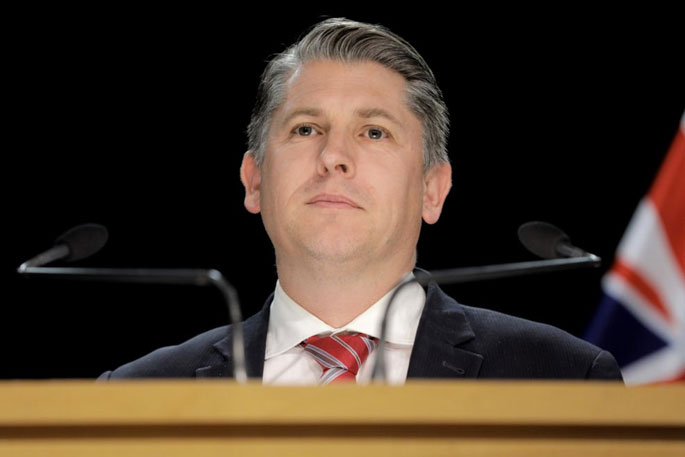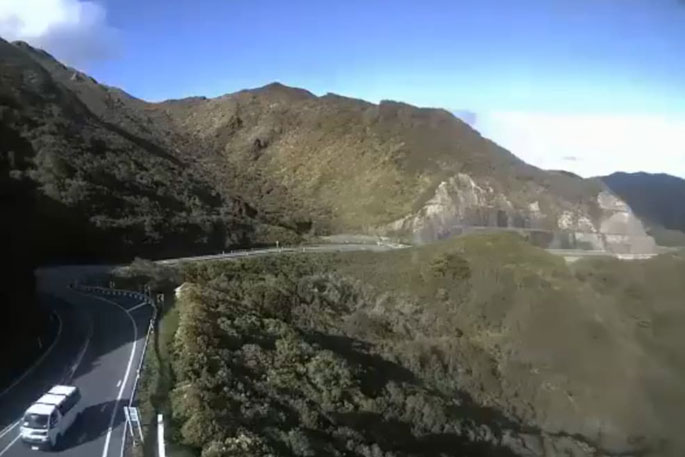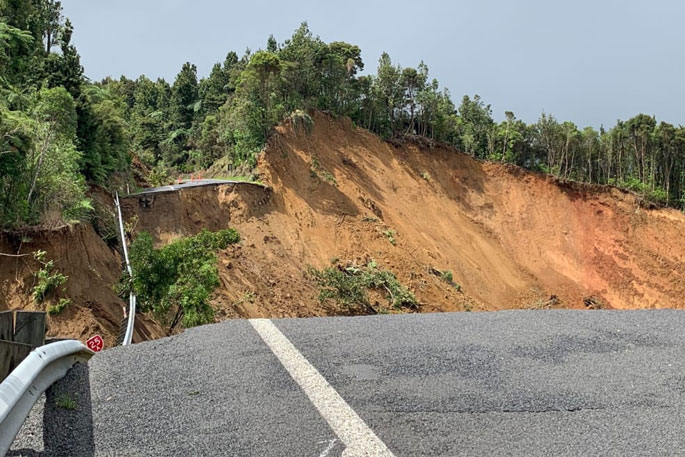The Transport Minister admits some roads may need to be abandoned as a result of climate change, and the extreme weather it will bring.
Last week, RNZ revealed Waka Kotahi had, until recently, not been factoring climate change and the need for resilience into its transport projects.
The agency was said to be swamped by the need to respond to crisis.
In its National Resilience Programme Business Case, produced by Tonkin + Taylor and Tregaskis Brown in 2020, the agency was criticised for "disjointed and reactive decision-making" which had led to "suboptimal and inefficient investment choices and is hampering our ability to adapt".
The report found more than 350 risks to the national roading network - 38 of which were extreme.
In Thursday's Budget, the government dedicated $6 billion to transport resilience, and Transport Minister Michael Wood confirms it will be used proactively, rather than as a reaction to damaged infrastructure.
"That's a proactive piece of work," says Wood.
"It's about getting in there, region by region, looking ahead, assessing where the greatest risks are, and trying to make wise long-term decisions about how we make sure our assets can withstand a future with climate change."
An interactive map produced as part of the resilience report gives a good guide of the kind of work the government will prioritise with its resilience fund.
 A road closed sign during flooding in January 2023.
A road closed sign during flooding in January 2023.In Auckland, areas hit hard by the Anniversary Weekend flooding were identified three years ago as prone to flooding due to poor project planning.
For instance, State Highway 1 near Newmarket was listed as at moderate risk of flooding.
"High potential for pooling of water," the report says. "Is 100 per cent reliant on soakage disposal. Surface water collection, conveyance and disposal systems area all of limited design capacity. A 1 per cent [annual exceedance probability] AEP rainfall event could result in loss of system access and availability."
The report suggests land will need to be purchased to build an alternative drainage system.
"For example tunnel for stormwater management... would require purchasing of land away from infrastructure. Relatively convenient detours available but regional system disruption will be significant."
And just north of the Harbour Bridge on State Highway 1 is listed as a major risk to the network due to sea level rise and coastal inundation, which already happens today.
"This results in varying amounts of inundation across 4 lanes, from bus lane only through to all lanes. This can cause significant disruption to the availability and resilience of the system. In extreme cases this results in window of significant disruption (and loss of multiple lanes) for about two hours at high tide window."
The report suggests the highway may need to be raised, flood barriers built, or a pump system installed to mitigate the risk.
 Transport Minister Michael Wood. Photo: RNZ / Angus Dreaver.
Transport Minister Michael Wood. Photo: RNZ / Angus Dreaver.
Wood says the resilience fund will address many of the issues identified in the report.
"Broadly speaking it's about looking at those regions, identifying where key infrastructure is that people are highly reliant on, understanding the risks, and then understanding the options for building as much resilience in as we can."
Some roads identified in the report are not fixable, and there are not solutions to mitigate the risk, such as alternate routes.
For example, the Remutaka Hill Road near Wellington is susceptible to landslides, earthquakes and liquefaction.
"If there is an earthquake it will be out of service due to many risks," the report says. "Focus should be on State Highway 1 first to get a route open to the north before addressing State Highway 2."
The report goes on to say: "Requires ongoing investment to improve resilience, but likely to always be a risk in large earthquakes."
Wood says in extreme cases, it was possible the infrastructure will not be rebuilt if it's damaged by earthquakes, storms, or in other ways.
"That is a real possibility as we work this through.
"It's very likely as we work it through that we might want to make changes on the network. We might say, rebuild a certain asset in a different way.
"If a bridge has been damaged, perhaps we need to build it higher, or at a different point on that catchment system. There might be different routes that we need to explore.
"At the extreme end there might be places where we know that the impact of extreme weather is going to be so unremitting that... we need to think about doing it completely differently."
 The report said the Remutaka Hill Road was susceptible to landslides, earthquakes and liquefaction. Photo: NZTA / Twitter.
The report said the Remutaka Hill Road was susceptible to landslides, earthquakes and liquefaction. Photo: NZTA / Twitter.Green Party transport spokesperson Julie Anne Genter says investment in rail and sea shipping should be a focus in future for cut off communities, and Wood agrees.
He says sea shipping has been a lifeline for the East Coast after Cyclone Gabrielle, and that will be explored further.
Wood says it's "beyond time" resilience is properly factored into infrastructure spending, and tough conversations were now beginning with communities that will be affected in future.
"We need to do it carefully, and work it through with communities in those areas to make sure people have what they need to live their lives well.
"Where we have to make decisions about where assets are and where that might need to change, we need to work that through with the communities.
"But as I said, we have to move forward with this because if we don't we actually expose communities to more vulnerabilities in the future."
The $6b resilience fund will be delivered over four years, and Wood says decisions on projects that will receive funding are still being worked through.



3 comments
So then.....
Posted on 22-05-2023 21:33 | By groutby
....we give up on technology?...previously known as the savior of the planet...we give up on our traditional skills? ...we give up on our resilience and determination to overcome against all odds??...well there you are, it rains a lot and way too heavily, blame it on something out of our control and need to adapt to, and collapse whimpering....not the country run by a government and 'hangers on' we can expect true leadership from...... ..perhaps.....maybe.....we have to.....GEEZ !! No surprise at all.............
Ha, lol
Posted on 23-05-2023 08:11 | By an_alias
So you spend NO money on roads for 6 years with the agenda of letting no one use cars. Job done, we have can't fix them...its too hard. News, alert, the climate has always changed and ITS NOT MAN MADE CHANGE.
@an_alias
Posted on 23-05-2023 12:46 | By The Professor
Well said mate!! I am over Governments around the world thinking that they can stop climate change. It is pure nature which is down to the earth constantly changing its tilt on its axis over tens of thousands of years. These people don't stop an wonder why the ice age came to an end......long before industry and motor vehicles were around. We are al being controlled by overpaid bureaucrats.
Leave a Comment
You must be logged in to make a comment.